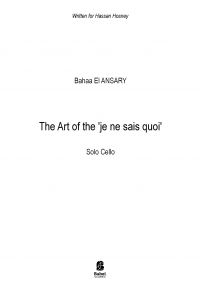demone all'uomo l'indole II
ISMN : 979-0-2325-6752-5
- Login to create your own lists
As with many fragments of Heraclitus, the translation and understanding of the maxim ἦθος ἀνθρώπῳ δαίμων - ethos anthropoi daimon has many shadows. There are many interpretations of the most careful philosophers and philologists, from "the character is the demon for man" to "the character determines the destiny of man", from "man’s character is his Genius" to " one's inner quality, for man, is a demon”. Despite the sententiousity of fragment, a strong becoming is intrinsec, a desire to imagine or, even more, to understand what can happen in the evolution of the Individual, even knowing his Character, his Nature, his Genius.
I don't think I have transposed the words of Heraclitus into music, but the suggestion produced by entering into this atavistic philosophy is certainly strong.
The first movement, I. demone all’uomo l’indole, there are three continuous underground flows on which a director sets his goal by focusing the listening. The sudden change of "listening frame" creates an interlocking form in which it is possible to recognize the process of the three flows that implode or explode, thicken or rarefy and stretch or relax until they end up mixing and living an inevitable together dissolution. The musical materials are of the most varied and all tend to find new timbral combinations, creating counterpoints of sonority in search of moving the fascinating monochrome machine of the string quartet.
The second movement, II. comune il principio e la fine del cerchio, the continuous circle of breath appears to become a vortex, a backwash. As there are two phases of the circle, beginning and end, there are two phases of breathing, inhaling and exhaling, two are also the types of breath that, in the alternation, not systematic, generating an inevitable osmotic interchange of perceptual information; the physiological breath, which is the basis of the principle comes to be so to say "colored" by the harmony, while the harmonic generated by the alternation of two chords circular (there will be then the intrusion of the other two) is to shed fibers while tonally the continued intensification of the remaining general parameters. All course on the limit of inaudible, of noise and of distorted.
Formal structure, harmonic structure, paradoxically dynamic structure become part of the closing of the circle, the coincidence of opposites, the principle of the most interesting of the Heraclitus’ philosophy.
Pages - 42







